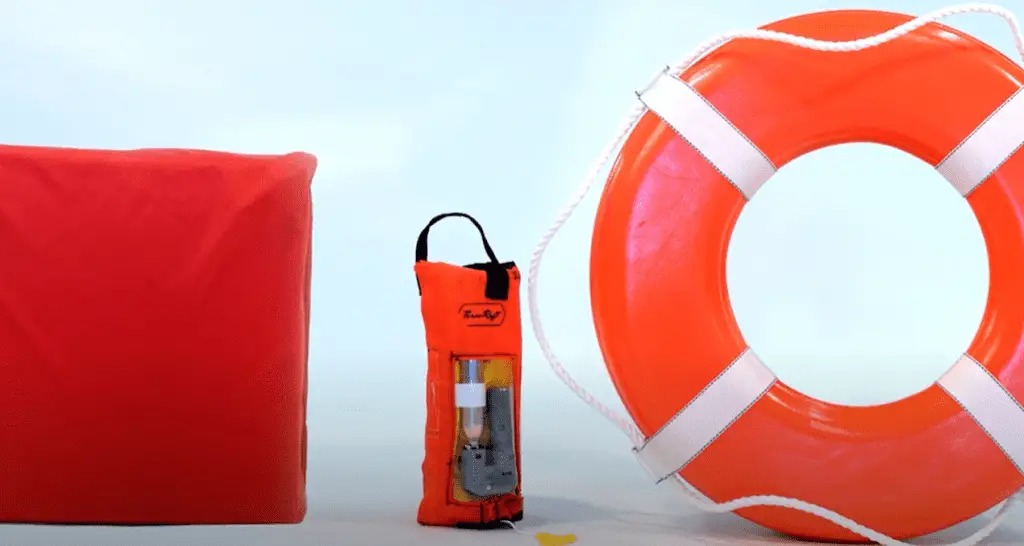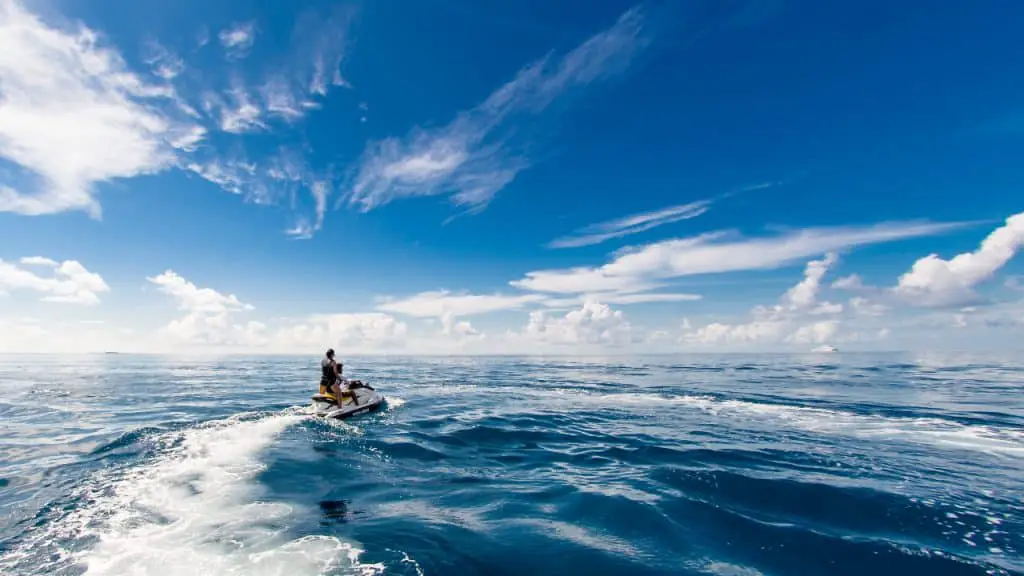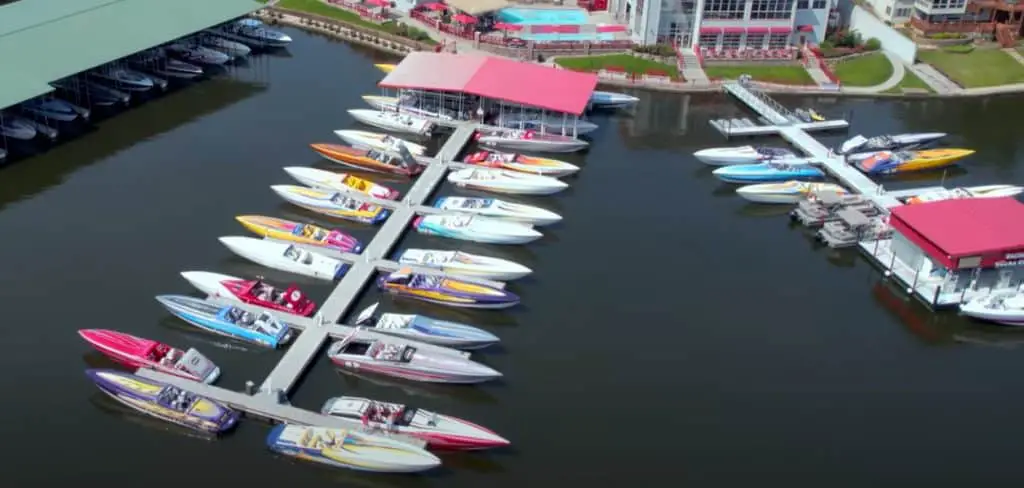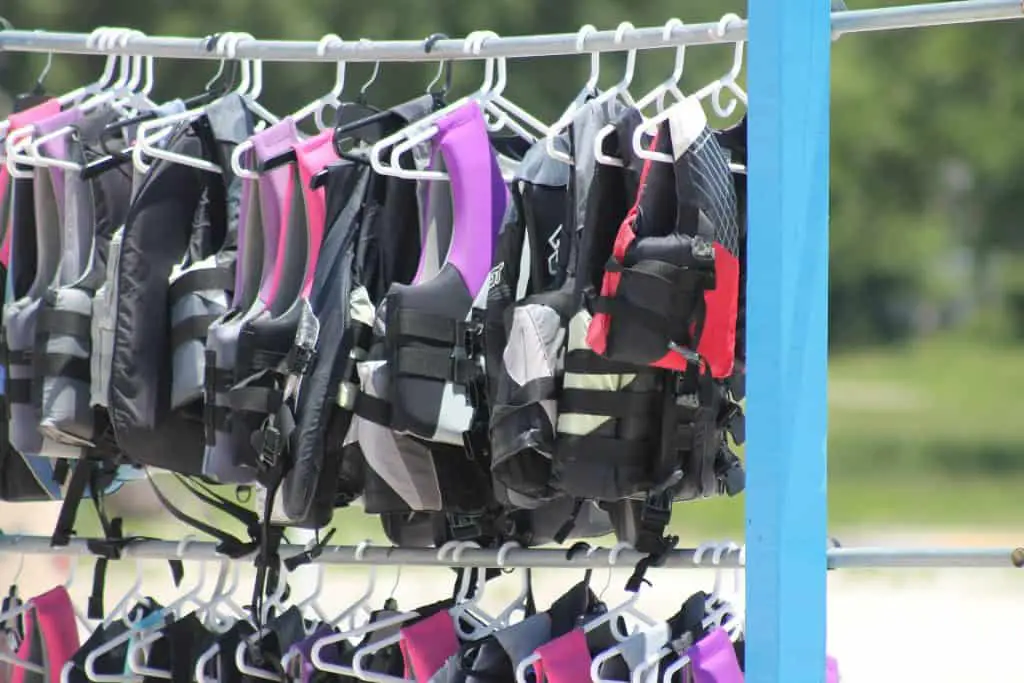Personal flotation devices save lives - full stop. So it's important that you follow the rules when it comes to PFD usage and availability on your boat. According to the US Coast Guard, boats must have available life jackets for each passenger on board. If you're operating a boat that's more than 16 feet in length, then there's the added requirement of a Type IV PFD.
Also called a 'throwable flotation device', the IV PFD a type that provides advantages that other types of PFDs might not be able to provide. So exactly what is the main advantage of a Type IV PFD? Read on to find out.
The Main Advantage of Type IV PFDs
Before we get into that, let's take a look at wearable PFDs. According to the US Coast Guard regulations for flotation devices, all passengers must have one that's of the right type and size. That implies that there are life jackets that can be the wrong size - and there are.
Wearing a PFD that's not the right fit can double the danger of falling into the water. A life jacket that's too big will push up from the wearer's body and will fail to support the head. This can lead to drowning, especially if the individual is unconscious. A life jacket that's too small might not provide sufficient buoyancy, leading to exhaustion and fatigue.
Which brings us to the point of the Type IV PFD. In the world of PFD a type IV is the only kind you don't wear. There are lots of advantages of a type IV PFD, but the most significant is that it can be worn by anyone. It doesn't matter what the size or age of the person who fell is - a PFD type IV will work without picking and choosing its passenger.
What is a Type IV PFD?
In essence, a IV PFD type is a flotation device that you can throw to a person that's in the water. While they're not designed to be worn, they do serve the same purpose as any of the other types of personal flotation devices. They can be thrown to someone regardless of whether or not they're already wearing a PFD life jacket.
The US Coast Guard requires that all watercrafts measuring longer than 16 feet need at least one Type IV PFD on board. Generally, Coast Guard approved ring buoys should have a buoyancy of at least 16.5 pounds.
Keep in mind though that while a Type IV PFD can come in handy in various situations, there are times when it might not be too helpful. For instance, the Coast Guard doesn't recommend using a life buoy or type IV PFD in rough waters because it requires that the individual grab on. With large waves overcoming the person, letting go of the throwable device becomes a very real possibility.
And then of course, there are instances when the person in the water is unconscious. A throwable flotation device can only be thrown to someone in the water if that person is alert and conscious. Otherwise, they wouldn't be able to grab on to the ring buoy.
In these cases, it's always better to use a type of PFD that they can wear. The only issue is that sometimes, people fail to wear their life jackets, which gives the boat operator no choice but to use a throwable PFD even when it isn't recommended.
Different Kinds of Type IV PFDs

There are three different kinds of type IV PFDs available, and all of them serve a purpose for different environments. All in all though, they aim for the same thing - and that is to help keep a person above water while they wait for rescue. Construction also tends to be the same across the board - a closed cell plastic core with a vinyl coated cover.
Ring Buoys
The iconic ring buoy is the typical depiction of a type IV PFD. They take the shape of a ring, thus the name 'ring buoy' and they're designed for relatively calmer waters. They're found on commercial boats and even in swimming pools.
Horseshow Buoys
Found on personal watercrafts and motorized boats, horseshoe buoys are shaped like, well a horseshoe. They're intended for slightly rougher waters like beaches. The cutout part lets you swim into the horseshoe even when the water around you is a little rough.
Buoyant Cushion
Looking like a seat cushion, the buoyant cushion Type IV PFD doesn't have any holes for you to fit your body through. Instead its purpose is to keep you above water by letting you rest your chest and torso on the seat cushion surface. Persons can also paddle their arms and legs to move closer to safety while on a Type IV buoyant cushion PFD.
The Benefits of a Type IV PFD
While it does have limitations, there are some serious benefits to using a Type IV PFD. Although it isn't designed to be worn, there are a number of advantages of a Type IV PFD that many wearable life jackets can't deliver.
Size Restrictions
Again, what is the main advantage of a Type IV PFD? It's that it doesn't have size restrictions. The IV PFD a type that can be used by people of any height and weight, expanding its coverage and its ability to save lives. This is unlike the life jacket that sacrifices both efficacy and safety when it's either a little too snug or too loose.
Throwable
Another advantage of a type IV PFD is that you can throw it to someone who fell overboard. Remember that Coast Guard rules concerning wearing PFDs only require that boat owners have one on board for every passenger. There's no law requiring that they wear a life jacket while the boat is underway. So when the boat meets an obstacle that calls for a sharp turn, or if a large wave slams into the watercraft, it's very possible to get tossed over the rails without a PFD.
Because it's difficult - or even impossible - to wear a life jacket when you're already in the water, a Type IV PFD becomes an obvious necessity. Because they're designed to be thrown, people can still get the flotation support they need even if they aren't wearing life vests.
Versatile
The main reason why people don't use their wearable PFDs on a boat is because they're not always that comfortable. The large, padded material can restrict movement and feel awkward on the body. That's also why you won't see anyone wearing PFDs in swimming pools.
Unfortunately, the controlled environment of a swimming pool doesn't lessen the risk of drowning. On the upside, the use of Type IV PFDs is not strictly reserved for open water. Lots of public and private pools have a throwable device on standby to provide support and rescue to a person in the water, especially since wearing a life jacket is uncommon in pools.
Tips for Using a Type IV PFD

The advantage of a type IV PFD makes it an obvious necessity not only for boats, but also for pools. But while its use might seem straightforward, there are some important reminders to keep in mind when using this type of flotation device.
Remove the Packaging
This one should be pretty obvious. However a boat operator that buys a Type IV PFD not thinking he's ever going to use it might stow it away on board without first removing the plastic wrapping. And when that emergency situation strikes, they either toss the device as is or spend precious minutes trying to get the wrapping off.
Make sure you remove any packaging on the device before you stow it away on your boat. The flotation device must be accessible and ready to be thrown to a person in the water when you take your boat out for a spin.
Keep it Accessible
On the topic of accessibility, it's vital that the type IV PFD flotation device is kept in an area where it can be easily accessed. This just cuts down the time that people on board would spend trying to look for the device. So avoid packing it away in storage, and stacking other items on top of it.
Sometimes, there will be people on the boat that aren't familiar with the placement of certain important items like your Type IV PFDs. Aside from informing them, see to it that you post a location marker or location indicator to let people know where the type IV PFDs are stowed. See to it that the location indicator isn't obstructed by any objects or items on board.
Your Kids Still Need to Wear Their Life Jackets
All children aged 13 and under should wear life jackets at all times when they're on the boat - whether or not it's underway. Keep in mind that your state might have their own regulations regarding kids and life jackets. But even if your locale doesn't have specific guidelines for children and PFDs, it would be in your best interest to have them wear an appropriate PFD anyway.
The Type IV PFD isn't easy to use, and smaller children might struggle to grab on or swim to the Type IV PFDs if they were in a panicked situation. That said, it's still better to have them wearing a life jacket so they have better chances of survival if they accidentally fall overboard.
Throw Slightly Away From the Person
The Type IV PFD might be a soft and padded, but even buoyant cushions can bust a nose when thrown with force. So instead of aiming directly at the individual in need of assistance, try to throw the device slightly off to one side. Don't aim for the individual. A Type IV PFD thrown with force can cause injury and may even knock the individual unconscious, which spells out greater danger.
Tether the Type IV PFD
What if you're not too good at throwing, and you miss the target or fall short of the individual in need of rescue? In that case, you might want to consider tying a line to the type IV PFDs. Some boats tie a line when the Type IV PD isn't in use, but others secure a rope that's long enough so that it doesn't pull the type IV PFD back when it reaches the end of the line. So when you toss the Type IV PFD into the water the rope goes with it.
If you're not confident that you can throw Type IV PFDs where they need to go, tie a rope. This should let you pull the flotation device back to your boat so you can try again. Experts also recommend closing the gap by steering slowly closer to the individual so you have a better chance of throwing the device within their reach. Finally, the rope also lets you pull the PFD with the individual clinging to it so you can help them re-board your watercraft.
What About a Kayak or Canoe?
Type IV PFDs might serve a purpose on a canoe, but only in certain situations. Experts suggest that the PFD be kept within reach and untethered when used on canoe. Use a type IV in calm waters where help is available. If you're in rough remote waters where rescue might be slow to come, opt instead to wear type III personal flotation devices.
On a kayak, the story is a little different. There is no place to safely stow buoyant cushions if you're on a kayak. Because it can change the dynamics of your seat, any the buoys ring may get lodged in the cockpit, experts recommend that individuals wear type III PFD life vests instead.
How to Choose the Right Type IV PFD
In terms of the designs and unique qualities of PFDs type IV is generally offered in fewer variations, but there are variations nonetheless. If you're looking to buy type IV PFDs for swimming pools or boats, there are some things you need to consider. Here's how to choose the right Type IV PFD for your needs:
- Bright neon colors stand out and are easier to see in all sorts of water conditions
- Adults need at least 7-12 pounds of buoyancy to stay above water. Choose a Type IV PFD that meets or exceeds that
- Always look for USCG approval
- Consider the place where you plan to use Type IV PFDs and choose a specific design accordingly (buoyant cushions, ring buoys, or horseshoe buoys)
- Look into materials. Caring for a type IV flotation device can take time, quality materials can call for less maintenance. See: what causes a PFD to wear out over time.
What is the Main Advantage of a Type IV PFD?
On the topic of the PFD a type IV provides benefits that none other can deliver. So what is the main advantage of a type IV PFD? When it comes to the type IV PFD the main advantage of course is that they don't choose who they're going to save - they're effective for individuals of all ages, sizes, and heights. Ring buoys are often overlooked because they aren't as prominent as the wearable devices. But serving a purpose that no wearable types of PFDs can provide, the Type IV PFD proves itself an invaluable essential for any boat.





